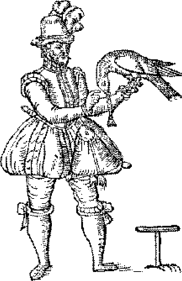The Taming of the Shrew
In The Taming of the Shrew, Shakespeare creates a troubling comedy that explores Elizabethan issues of gender. The idea of "taming" one's wife in Elizabethan England was a common one, and was coupled with a popular image of the shrewish wife in the male-dominated literary tradition. Shakespeare's version is less unpleasant than others, but it can be a difficult play for modern readers. Nonetheless, it poses important questions, and has some typically memorable poetry.
The text exists in a puzzling relationship with a near-contemporary version, The Taming of a [not 'the'] Shrew, which has an impact on the way The Taming of the Shrew is understood. As is often the case, Shakespeare's play cannot be dated precisely, making the relationship hard to sort out.
Some topics explored in these pages include:
- Christopher Sly and the Induction scenes
- The Taming of a Shrew
- Courtship: disguise, deceit, and dowries
- Social "order"
- Tamed?
See also:
- A modern text of The Taming of the Shrew.
- Old spelling text of Folio 1.
- A facsimile of the first publication ofThe Taming of the Shrew.
- The essential facts about the play.*
Footnotes
-
Summary: facts about The Taming of the Shrew
Written:early 1590s
First published:
in the First Folio, 1623.First mention: the play is not mentioned before its Folio appearance. However, it may have been confused with The Taming of a Shrew, which was entered into the Stationers' Register on May 2, 1594. It has also been suggested that the possibly lost "Love's Labour's Won" (mentioned by Francis Meres in 1598) was, in fact, the present play.
Sources: George Gascoigne's Supposes (1566); "A Merry Jest of a Shrewd and Curst Wife, Lapped in Morel's Skin for Her Good Behaviour" (ballad, published 1550).
